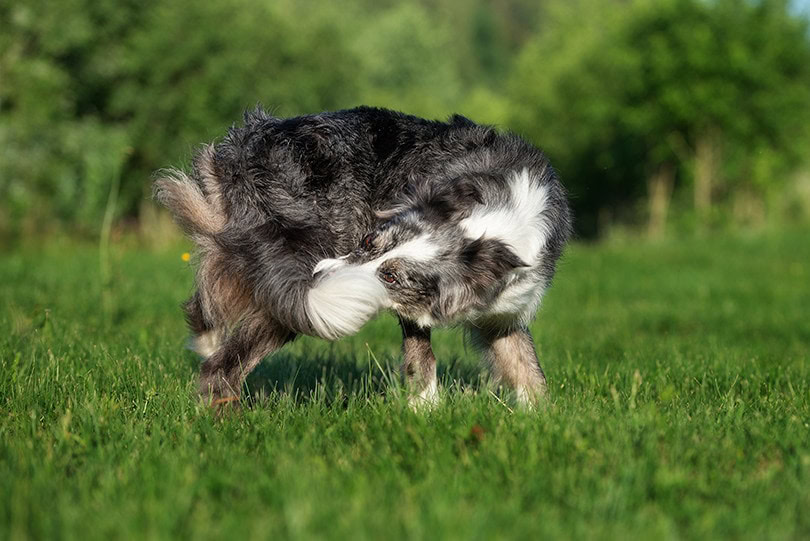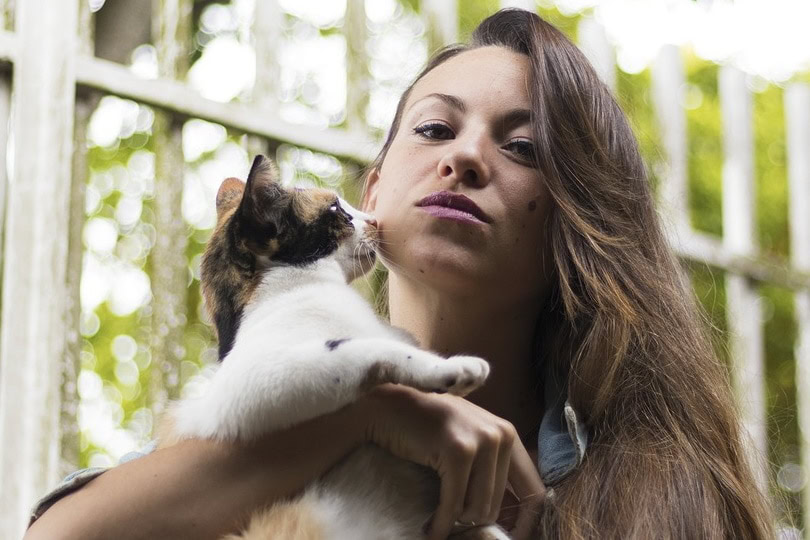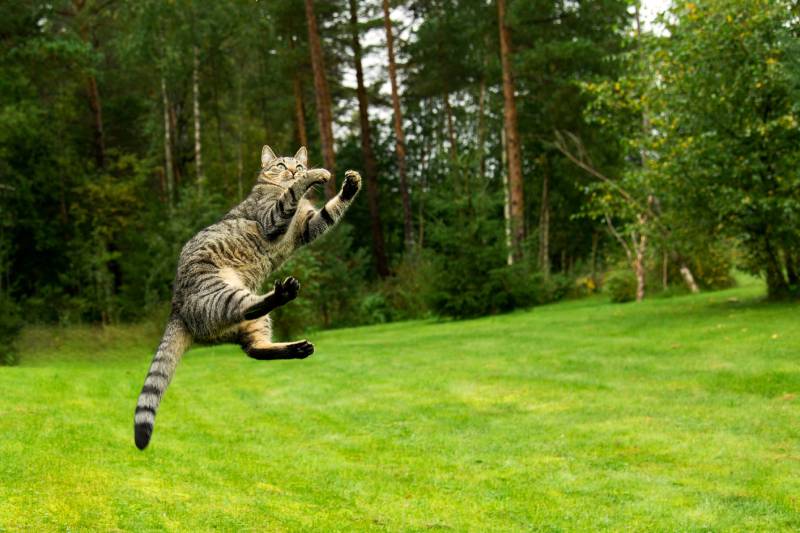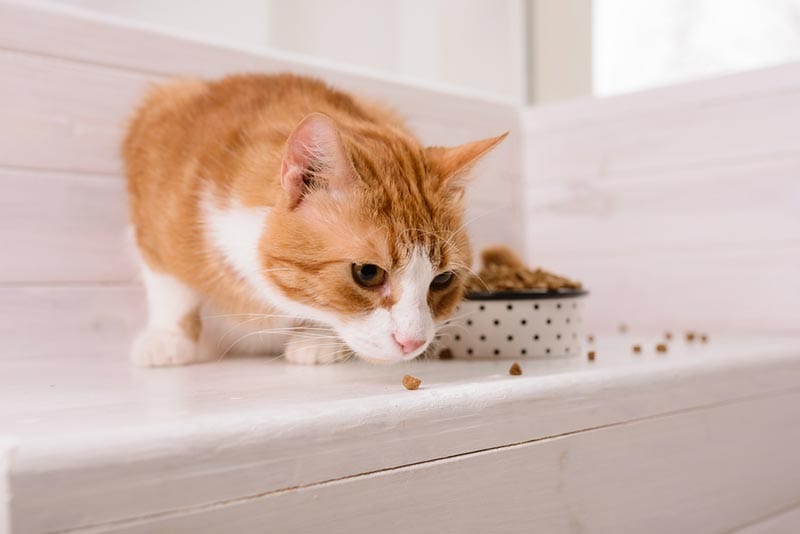VET APPROVED

The information is current and up-to-date in accordance with the latest veterinarian research.
Learn more »As all dog owners know, dogs are capable of strange behaviors at times, most of which are simply endearing, harmless, and entertaining antics that make us love them even more. One of these comical behaviors involves your dog running in endless circles chasing their own tail. While this is mostly harmless, if the behavior becomes obsessive, there could be underlying health issues.
Dogs chasing their tail is a fairly common behavior, and most owners never stop to wonder why their dog actually does this. In this article, we give six potential reasons for this strange behavior. Let’s dive in!

The 6 Reasons Dogs Chase Their Tails
1. Playfulness
The most common reason that your pooch is chasing their tail is simply out of playfulness. This is especially common in puppies and younger pooches because they are still discovering the world around them and may not yet understand that their tail is a part of their body! They see their tail as a toy rather than a part of their anatomy and want to catch it to see how it tastes and determine exactly what it is.
This behavior is mostly harmless, although it can become problematic if it becomes impulsive, so be sure to keep an eye out.
2. Boredom
If your pooch is no longer a young, inquisitive puppy, they may be chasing their tails purely out of boredom. Your dog can entertain themselves by chasing their tail, turning it into a fun game that they can play on their own. This can be caused by a lack of stimulation. Dogs that are left alone at home all day or don’t get enough exercise may release some of that pent-up energy by chasing their tails.
This is generally easy to fix by simply giving your dog the exercise and stimulation they need. If they are already getting the required stimulation, though, there may be another issue at hand.

3. Parasites
If you’ve noticed your pooch chasing their tail and biting it, they may have fleas or another external parasite that is causing them discomfort. Fleas can be extremely itchy, and your dog cannot scratch their tails with their paws, leaving their teeth as the last option! Check their skin for any ticks that may have latched on or for a flea infestation. There may even be a small amount of hair loss from the scratching. If this is the case, you’ll need to use a flea and tick collar or spot treatment to get rid of the infestation. Seek veterinary advice for the best parasite control method for your pup.
4. Anxiety
When dogs are scared or anxious, they can display strange behaviors, and this can include repetitive behaviors such as chasing their tails. There could be a long list of potential causes for your dog’s anxiety, including moving to a new home, boredom, or aggressive behavior from another pet. This kind of fear and anxiety can cause compulsive behavior, and you’ll need to figure out what’s causing the issue.
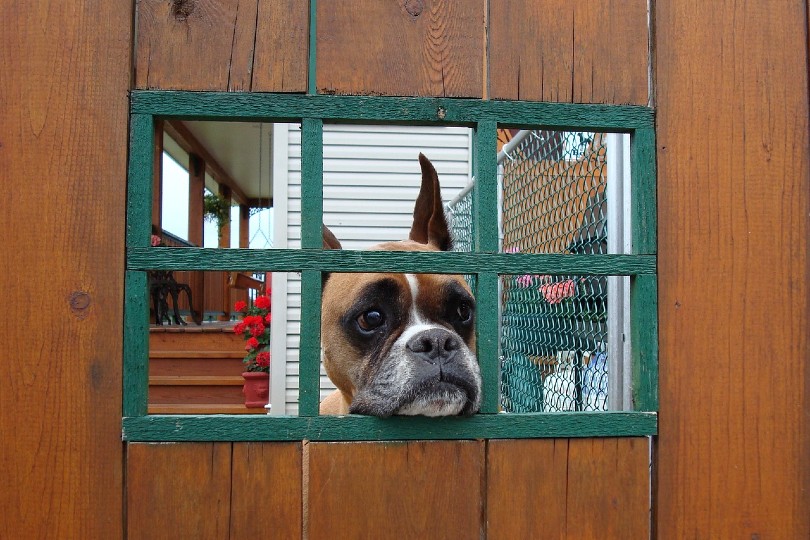
5. Medical Issues
If your dog is chasing and biting their tail, yet they are well-exercised and have no fleas or ticks, there may be an underlying medical issue. It could be a skin allergy, impacted anal sacs, intestinal parasites that are causing discomfort in your dog’s anus, or even an injury to their tail. In any case, you’ll need to take your pooch to a vet to diagnose the issue and get treatment.
6. Behavioral Issues
Another possible reason that your pooch may be chasing their tail is due to compulsive behavioral issues. Dogs can quickly develop behavioral problems and compulsive behavior for a variety of reasons, be it boredom, anxiety, or fear. Even a puppy that playfully chases their tail may seem innocent at first, but if not monitored carefully, it can become compulsive. Try to keep your dog both mentally and physically stimulated to prevent this from happening. If you notice the behavior becoming more frequent, nip it in the bud before it becomes habitual.
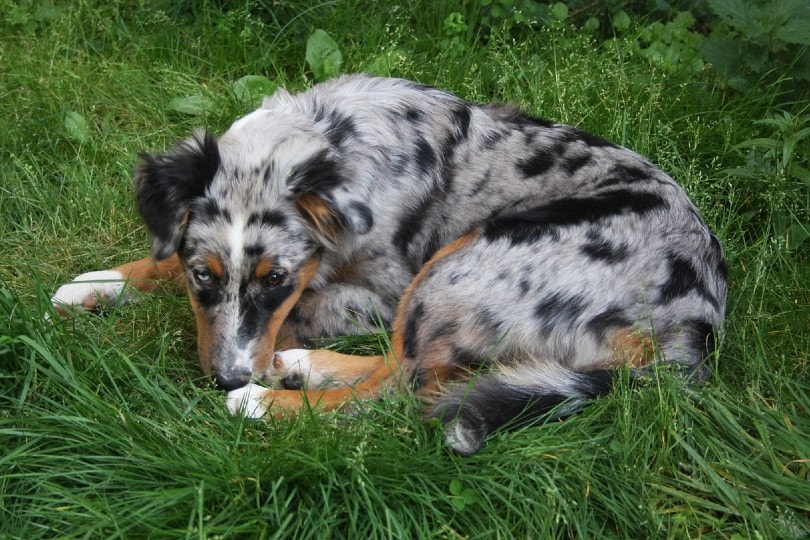

Conclusion
There are several reasons that your dog could be chasing their tail. The only way to stop the behavior is to find the underlying root problem and address it appropriately. Most of the time, this behavior is completely innocent or due to discomfort that your dog is trying to relieve. It can become compulsive, though, so if there are no obvious underlying issues, you’ll need to address the behavior quickly through training to avoid it becoming habitual.
Featured Image Credit: otsphoto, Shutterstock
